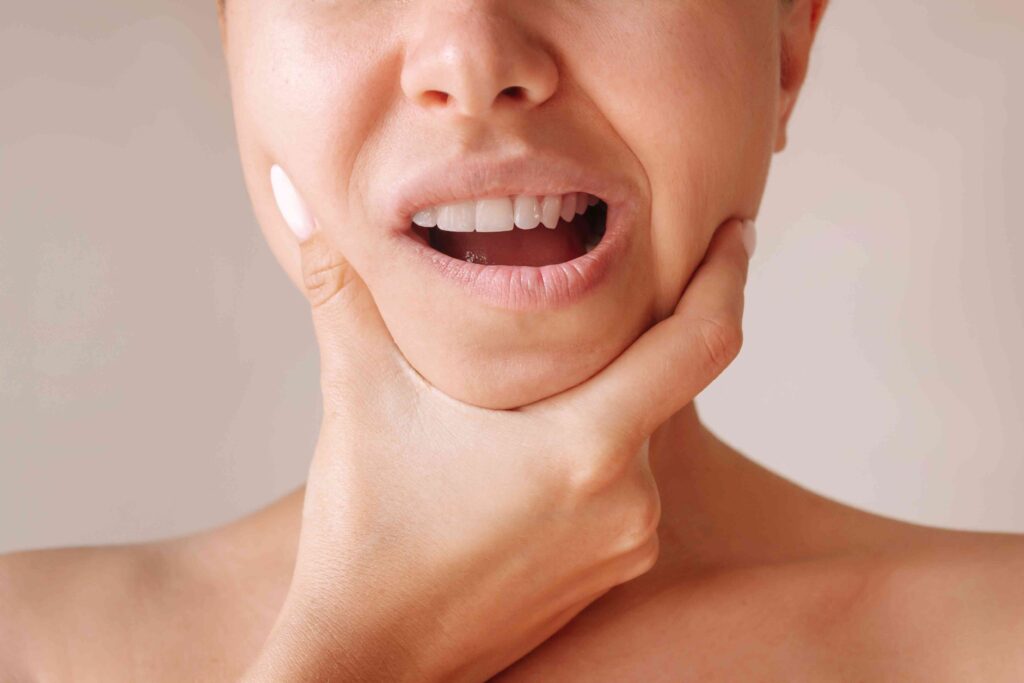
The temporomandibular joint (TMJ) is the joint that connects your lower jaw to the skull. These joints are located in front of each of the ears. When they aren’t functioning properly, this is called TMJ disorder, or TMD. In addition to causing discomfort of the jaw, it can result in pain in other areas, like the head and ears. The good news is that there are some exercises and stretches you can do at home to relieve this tension. Continue reading to learn about some of the ones that patients have found effective.
Relaxing Your Jaw
Pain of the TMJs can result from muscle tension. Here are some steps to take to help your jaw relax.
- Rest your tongue on the roof of your mouth. The tip of your tongue should be located behind your upper front teeth.
- As you relax your jaw muscles, allow your teeth to come apart.
- Slowly open your mouth to a comfortable size.
- Carefully close your mouth and repeat these steps.
Chin Tucks
If you have discomfort associated with jaw movements, chin tucks may be helpful. This exercise works by stretching the TMJ without opening the mouth.
- Sit or stand with your shoulders pulled back and your chest upwards.
- Pull your chin back and down toward your chest. This will make it appear as if you have a “double chin.”
- Hold this position for three seconds.
- Return back to your normal position.
- Repeat steps 1-4 10 times.
Resisted Opening of the Mouth
By adding resistance to stretching exercises, you can increase the strength of your jaw muscles.
- Place your thumb under your chin.
- Slowly open your mouth, pushing gently against your chin. This will provide some resistance.
- Hold this position for three to six seconds.
- Slowly close your mouth.
- Repeat these steps 10 times.
Resisted Closing of the Mouth
Just like resisted opening of the mouth, resisted closing of the mouth helps to strengthen your jaw muscles.
- With your mouth open, squeeze your chin with your index finger and thumb.
- Close your mouth, placing gentle pressure on your chin.
- Slowly open your mouth.
- Repeat these steps 10 times.
If you are experiencing signs of TMD, let your dentist know. This way, you can discuss your symptoms and put together a treatment plan that meets your needs!
About the Author
Dr. Mitch Conditt earned his dental doctorate from the Baylor College of Dentistry and has over 35 years of experience in the field. Today, he is proud to specialize in sleep dentistry and TMJ therapy so he can help patients achieve lasting relief. To learn more about TMJ treatment or to schedule an appointment at his office in Fort Worth, visit his website or call (817) 527-8500.
